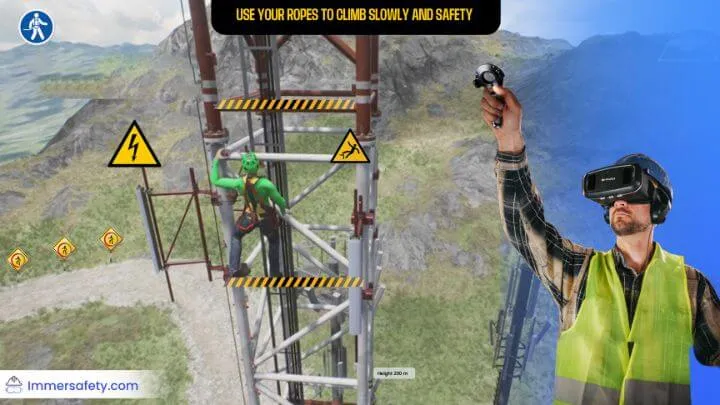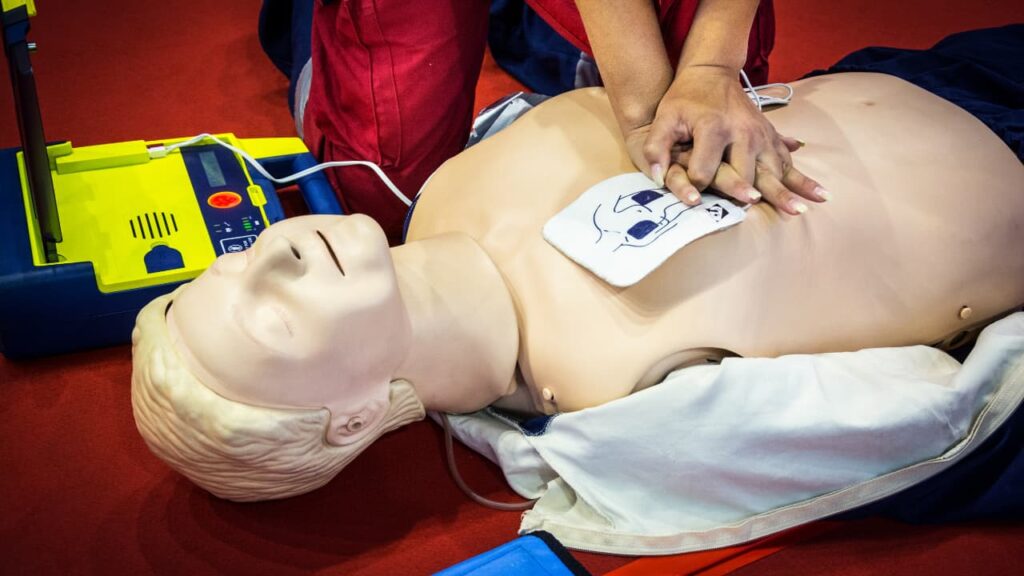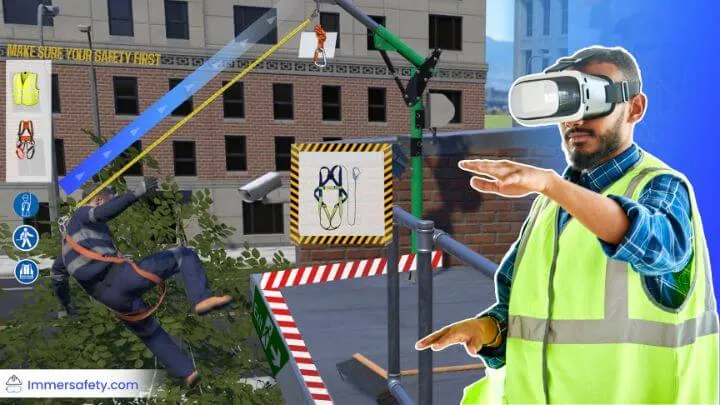Ensuring the safety and well-being of employees is a top priority for any organization. Effective employee safety training plays a crucial role in preventing accidents, injuries, and illnesses in the workplace.
By providing comprehensive training on a wide range of safety topics, employers can empower their workforce to recognise hazards, mitigate risks, and respond effectively to emergencies.
In this in-depth guide, we’ll explore 21 essential employee safety training topics to create a safer work environment for everyone.
21 Safety Training Topics For Employees at Workplace (2025)
1. Workplace Ergonomics:
Workplace ergonomics training focuses on optimizing the work environment to minimize strain and reduce the risk of musculoskeletal injuries. Topics include proper workstation setup, ergonomic principles, and techniques to prevent repetitive motion injuries.
2. Safe Lifting Techniques:
Employees learn safe lifting techniques to avoid back injuries and strains when lifting heavy objects. Training covers proper lifting posture, using leg muscles instead of the back, and assessing the weight of objects before lifting.
3. Workplace Violence Prevention:
Recognizing signs of potential violence, conflict resolution strategies, and reporting procedures are essential components of workplace violence prevention training. Employees learn how to de-escalate conflicts and create a safer work environment.
4. Fire Safety:
Fire safety training covers evacuation procedures, fire extinguisher use, and fire prevention measures. Employees are trained to respond quickly and effectively in the event of a fire emergency, minimizing the risk of injuries and property damage.
See Our VR Firefighter Simulator
5. Employee Health Resources:
Accessing mental health support, wellness programs, and health services is critical for employee well-being. Training educates employees about available resources and encourages them to prioritize their physical and mental health.
6. Fall Protection and Ladder Safety:

Fall protection training focuses on preventing falls from heights and ladder-related injuries. Employees learn about fall hazards, proper use of personal fall arrest systems, and ladder safety techniques to reduce the risk of accidents.
7. Environmental and Chemical Safety:

Handling hazardous materials safely, chemical safety protocols and spill response procedures are covered in environmental and chemical safety training. Employees are trained to identify environmental hazards and mitigate risks to protect themselves and the environment.
See Our VR Chemical Safety Training
8. Proper Use of Equipment and PPE:
Training on the correct use and maintenance of equipment and personal protective equipment (PPE) is essential for employee safety. Employees learn how to use PPE effectively to reduce exposure to hazards and prevent injuries.
9. Food Handling and Preparation:
Food safety training teaches employees proper hygiene practices, food storage procedures, and allergen management to prevent foodborne illnesses. Training ensures compliance with food safety regulations and protects both employees and customers.
10. Online Safety and Cybersecurity:
With the growing dependence on digital technology, online safety and cybersecurity training have become essential. Employees must be equipped to recognize phishing scams, practice strong password security, and navigate the internet safely to safeguard sensitive data and prevent cyber threats.
Immersive learning offers the most effective approach to cybersecurity and safety training. By simulating real-world scenarios, it enhances engagement, improves retention, and enables hands-on practice in a risk-free environment.
Whether through Virtual Reality (VR), Augmented Reality (AR), or interactive simulations, immersive training ensures employees can confidently identify threats and respond effectively, strengthening an organization’s overall security posture.
11. Heat Safety:
Heat safety training educates employees about the risks of heat-related illnesses and how to stay safe in hot environments. Topics include recognizing symptoms of heat stress, staying hydrated, and implementing cooling measures.
12. Emergency Evacuation Procedures:
Emergency evacuation training covers evacuation routes, assembly points, and emergency communication protocols. Employees learn how to respond calmly and efficiently during emergencies to ensure everyone’s safety.
13. First Aid and CPR Training:

First aid and CPR training equips employees with life-saving skills to respond to medical emergencies. Training covers basic first aid techniques, CPR administration, and proper use of automated external defibrillators (AEDs).
See our – CPR Training Simulator
14. Respiratory Protection and Air Quality Monitoring:
Respiratory protection training teaches employees how to use respirators and other protective equipment to prevent exposure to airborne contaminants. Air quality monitoring training helps employees identify potential hazards and take appropriate measures to protect their respiratory health.
15. Hearing Conservation Training:
Hearing conservation training focuses on preventing hearing loss caused by exposure to loud noises. Employees learn about the risks of noise exposure, proper use of hearing protection devices, and strategies for reducing noise levels in the workplace.
16. Electrical Safety:

Electrical safety training covers safe work practices, identifying electrical hazards, and working safely with electrical equipment. Employees learn how to recognize electrical hazards and take precautions to prevent electrical accidents and injuries.
See Our – VR Electrical Safety Training
17. Confined Space Entry:

Confined space entry training prepares employees for working safely in confined spaces. Topics include hazard recognition, atmospheric testing, and rescue procedures to minimize the risk of accidents and ensure worker safety.
See Our – VR Confined Space Training
18. Chemical Spill Response:
Chemical spill response training teaches employees how to respond effectively to chemical spills to minimize exposure and environmental damage. Training covers spill containment, personal protective equipment use, and emergency response procedures.
19. Workplace Hazards Identification:
Training on hazard identification helps employees recognize and report hazards in the workplace. Employees learn to identify potential risks and take proactive measures to prevent accidents and injuries.
20. Manual Handling and Material Handling:
Manual handling training focuses on proper lifting techniques, using mechanical aids, and reducing ergonomic risks. Employees learn how to lift and handle objects safely to prevent musculoskeletal injuries.
21. Safety Leadership and Communication:
Safety leadership training emphasizes the importance of leadership commitment to safety and effective communication about safety issues. Managers and supervisors learn how to promote a culture of safety, engage employees in safety initiatives, and lead by example.
FAQ’s
Why is employee safety training important?
Employee safety training is crucial for preventing workplace accidents, injuries, and illnesses. It helps employees recognize hazards, understand safety protocols, and respond effectively in emergency situations. By investing in safety training, employers demonstrate their commitment to protecting the well-being of their workforce.
What topics should be covered in employee safety training?
Employee safety training should cover a wide range of topics, including workplace ergonomics, fire safety, hazard recognition, first aid and CPR, chemical safety, and emergency evacuation procedures. The specific topics covered may vary depending on the nature of the workplace and the potential hazards employees may encounter.
How often should employee safety training be conducted?
Employee safety training should be conducted regularly to ensure that employees remain knowledgeable about safety protocols and procedures. Initial training should be provided to new employees, and refresher training sessions should be conducted periodically to reinforce key concepts and address any changes in workplace conditions or safety regulations.
Who is responsible for providing employee safety training?
Employers are responsible for providing employee safety training and ensuring that employees have the knowledge and skills to perform their jobs safely. This may involve developing training programs, providing access to training resources, and appointing qualified trainers or safety personnel to oversee training initiatives.
How can employees provide feedback or raise safety concerns?
Employees should feel encouraged to provide feedback and raise safety concerns with their supervisors or safety representatives. Employers should establish clear communication channels, such as safety suggestion boxes, safety committees, or regular safety meetings, where employees can voice their concerns and contribute to improving workplace safety.
Conclusion:
Comprehensive employee safety training is essential for creating a safe and healthy work environment. By addressing a wide range of safety topics, employers can empower their workforce to recognize hazards, mitigate risks, and respond effectively to emergencies.
Investing in employee safety training not only protects workers from harm but also enhances productivity, morale, and organizational success. With the right training and resources, organizations can cultivate a culture of safety where employees feel valued, supported, and empowered to prioritize their well-being.


